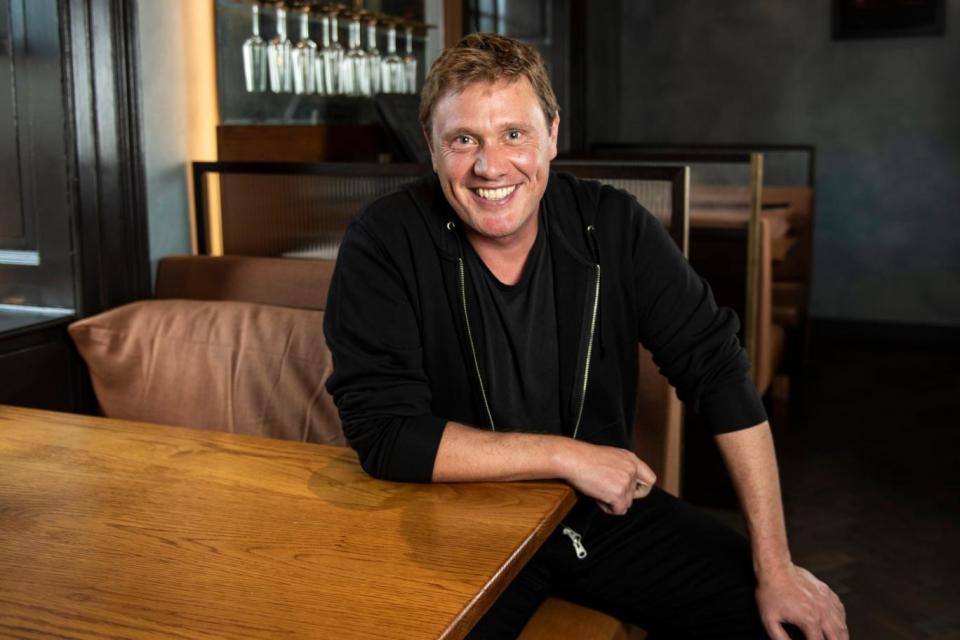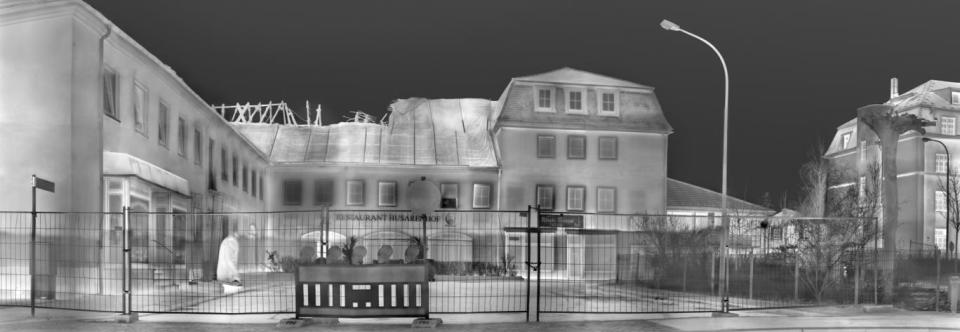Richard Mosse interview: 'We have to preserve the human rights of refugees'

As part of our series of interviews counting down to this year’s Evening Standard Art Prize, Ben Luke speaks to photographer Richard Mosse
In the nine years I’ve been reviewing exhibitions for the Evening Standard I’ve twice given installations by Richard Mosse five-star reviews. His work, in his words, “smashes together” the worlds of photojournalism and fine art photography and video, and documents some of the most extreme human tragedies of our times.
He captured the brutal conflict in Eastern Congo in his photographs and multi-screen installation The Enclave (2013), shooting on old military surveillance film that was developed to detect camouflage, so the landscape glowed an uncanny pink around the militias and displaced peoples that Mosse depicted.
Then, in Incoming (2017), Mosse used more contemporary military technology, a heat-sensitive video camera, to depict in black, white and shades of grey the scale and horror of the refugee crisis in Europe. Both works were harrowing yet spellbinding.
I meet Mosse at Somerset House, the home of the Prix Pictet, the global photography prize he won earlier this year. Now 38, the Kilkenny-born artist is as passionate about his subject matter as you would imagine for a man who has spent much of his adult life in war zones.
He’s an animated talker, regularly banging the table for emphasis. But his conversation is also shot through with self-deprecation and humorous asides.
Incoming, and the related series of epic composite photographs of the refugee camps, Heat Maps, which won him the Prix Pictet, are the latest in a career-long investigation of displaced peoples, which has taken him to the Balkans and the US-Mexican border before The Enclave thrust him firmly into the spotlight at the Venice Biennale in 2013.
Like all his projects, Incoming began by working “backwards”, he explains. “I start with the technology, with the medium.” The wildlife cinematographer Sophie Darlington, then working on the BBC’s Planet Earth II, introduced Mosse to the thermographic camera, and via a convoluted process he decided to focus on events in southern Europe. At the time the refugee crisis “was kicking off and 2014 was the first year, I think, that more than a million people landed ‘illegally’ — or to claim asylum”.

As with The Enclave, he wanted to subvert the technology’s original purpose but not through the obvious route of filming the military. “To turn it on refugees is an attempt to reveal how our societies represent those people,” he explains.
Part of Mosse’s interest in the technology was its ability to capture long-range images. “It can image human body heat from 18 miles away.” This meant he captured what he describes as “a scene from hell”, 5km from where he was in Lesbos: the shipwreck of a Turkish trawler packed by people traffickers with more than 300 refugees. The trawler’s upper deck cracked under the weight of people, injuring and killing those below “and in the ensuing panic the entire boat was ripped to pieces”.
He then observed the inadequacy of the response of Frontex, the European Border and Coast Guard Agency whose “multi-million-dollar boat, full of all the bells and whistles”, was first on the scene but is “designed to monitor and surveil these refugee routes, not designed to rescue people,” Mosse says. “Because we in Europe do not choose to help these people but choose to try to find ways to observe them, to try to keep them out.
“So I can’t imagine being one of the Frontex officers on that boat, because they rescued very few people, as far as I am aware. There was also a very fancy Frontex helicopter that was swooping in and zooming above them, and actually harassing the people who were drowning in the water.”
This latter point is corroborated by a Syrian artist and refugee, who we are unable to name here, who was on the boat. Together, her footage and Mosse’s are being used in an investigation into the sinking by the Turner Prize nominees Forensic Architecture, who work with organisations to investigate human rights abuses. Despite various rescue efforts by others, including local fishermen, Mosse says around 80 people died. While he was powerless to help that night, Mosse hopes that by presenting his work to audiences he can help “shift their perception, raise awareness about what’s actually happening, and get people to stop and think about their own level of complicity”.

“Some people might say, ‘Well, actually, it’s not our responsibility to help them’. I would argue that if you look at the Geneva Convention of 1951, if you look at international refugee law, if you look at the system of human rights that we’ve built following the Second World War, yes, we are utterly responsible and we’ve agreed to those conventions.”
He despairs at the rise of populist movements in Britain, Europe and the US and how the spectacle of illegal immigration is used by opportunistic politicians to spread fear. “It’s my belief that unless we preserve the human rights of the refugee, we will endanger our own human rights as citizens.”
Despite this conviction, Mosse denies that he is a campaigner or activist. Neither is he a photojournalist. His work has been caught up in a long-running debate in photographic circles around the ethics of depicting human suffering, where some critics argue that “to aestheticise that is somehow unethical”, as Mosse puts it. The critic Susan Sontag wrote that in pictures of atrocity, “people want the weight of witnessing without the taint of artistry, which is equated with insincerity or mere contrivance”. By playing down that artistry, reportage photographers were “flying low”, she suggested.
Mosse argues that even now photographers take a “lo-fi” approach: “Even though they’re using digital colour cameras, they still choose to desaturate, to go monochrome, black and white … but that is just as much an aesthetic decision as going hi-fi, as pushing the boat out aesthetically, amplifying the potential of the medium.”
Mosse’s passion for his medium peppers our conversation. He always wanted to be a photographer, ever since he was surrounded as a child by artists, including major international figures such as James Turrell and Christian Boltanski, who would come to show at the local Butler Gallery in Kilkenny and stay in his family’s home. His father, Nicholas, is a ceramicist and has collaborated with Turrell for 25 years on a work called Lapsed Quaker Ware. Mosse hopes soon to finish a short film about Turrell’s and his father’s relationship with Quakerism.
Being exposed to artists at a young age helped him see the power of art to “make visible what exists beyond the limits of language”.
“Art, if it’s good, is able to touch upon or point to parts of human experience that we can’t really talk about very well, especially through, for example, the faculty of the sublime.”
And there is no better case in point than Mosse’s work.
The Prix Pictet 10th Anniversary talk by Richard Mosse is at the Serpentine Galleries’ Work Marathon on September 22, serpentinegalleries.org. Mosse’s book of his Heat Map photographs, The Castle, is published by Mack books in October

Art Week is a series of interviews counting down to this year’s Evening Standard Art Prize, in association with Hiscox. To enter, and for terms and conditions, go to: standard.co.uk/artprize. #ESartprize

 Yahoo News
Yahoo News 